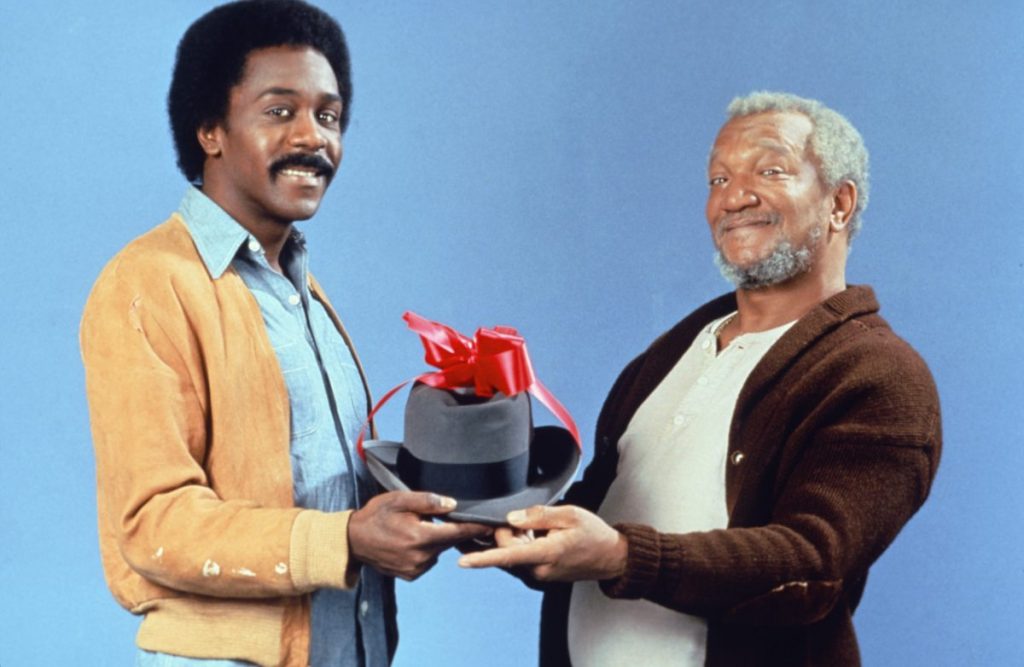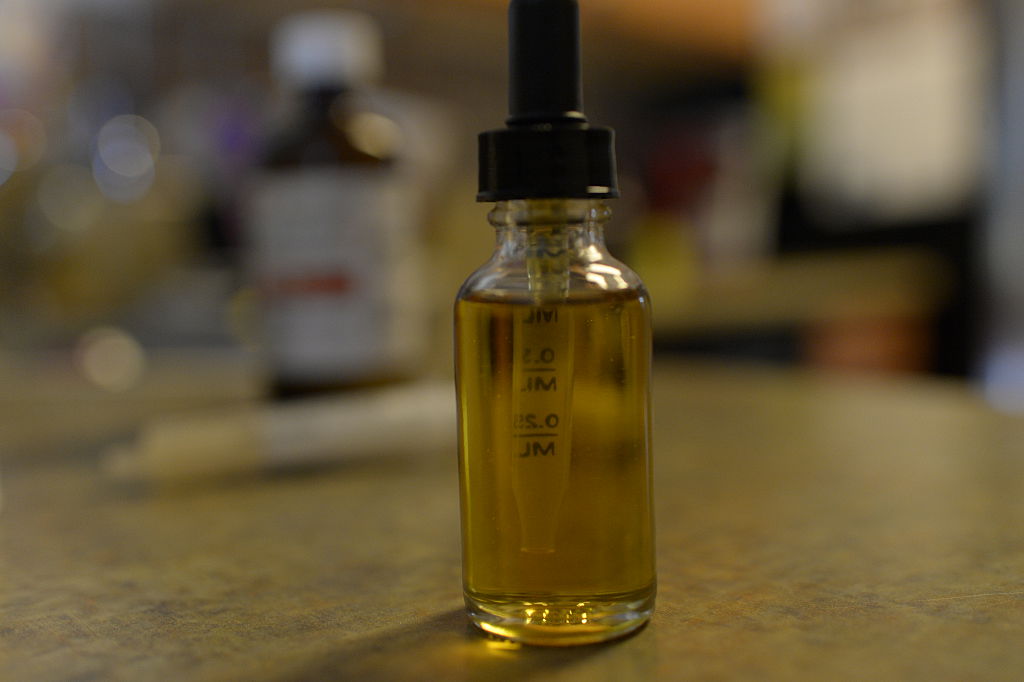James Joliat, a 35-year-old video producer in Denver, has long experienced muscle and joint pain—mostly related to sports injuries. He says he started looking at natural remedies as an alternative to the prescription patches and pills his doctor recommended. After experimenting with homemade rubs infused with plant compounds—stuff like arnica and turmeric—he eventually stumbled onto topical cannabidiol (CBD) rubs.
“I put that on my ankle after hiking or on my lower back, and it just feels like it really penetrates and has good anti-inflammatory properties,” he says. “I also fucked up my shoulder, and I felt like it helped a lot with the pain.”
Videos by VICE
He’s been using topical CBD for years with good results, and he recently tried ingesting CBD oil, which he called an “amazing” experience. “I just felt super relaxed—kind of an anti-anxiety type of feeling,” he says. “My body felt super mellow and limber, but not in a tired kind of way.”
“I just felt good,” he adds. “But I wasn’t high at all.” Joliat’s anecdotal experience with CBD is a common one. Some informal polling suggests a lot of people today are at least vaguely familiar with cannabidiol, and have either used it themselves or know someone who has. But even some people who use it don’t seem to know exactly what it is or whether there’s any hard science out there to back up its benefits.
What Is CBD?
“Cannabidiol is a compound found in the cannabis plant,” says Jerzy Szaflarski, a professor of neurology and director of the Division of Epilepsy at the University of Alabama, Birmingham.
Szaflarski explains that cannabis contains about 500 different compounds, some of which—including CBD and THC—interact with certain chemical receptors in the human nervous system. But unlike THC, CBD isn’t psychoactive—meaning it doesn’t cause any kind of a high. Despite that, the US Drug Enforcement Agency classifies CBD (and other cannabis compounds) as schedule I substances, making their sale illegal in many states.
“The brain has these receptors that respond to endocannabinoids, which are neurotransmitters that are naturally produced in the body and brain,” says Jerald Simmons, a neurologist at Houston’s Comprehensive Sleep Medicine Associates. “Some of the cannabinoids in the marijuana plant are very similar to the endocannabinoids in the brain, and they act on the same receptors.”
The nervous system’s endocannabinoid system is not well understood. But it’s thought to play a role in regulating pain, sleep, mood, memory, appetite, and other cognitive and physical processes. Because CBD is able to mimic the actions of some natural brain chemicals, its potential therapeutic benefits are wide-ranging but—at this point—nebulous. “We know that cannabidiol modulates the endocannabinoid system, but we don’t know how it works,” Szaflarski says. That said, there are theories.
More from VICE:
“THC”—the more-famous, high-inducing compound in cannabis—“works directly on the cannabinoid system, meaning it attaches to receptors and mimics some of our own internal endocannabinoids,” says Igor Grant, a professor and chair of psychiatry at the University of California, San Diego School of Medicine. But CBD’s interaction with the endocannabinoid system is subtler. “Normally, these endocannabinoid-signaling molecules are broken down by enzymes, and one thing CBD does is interfere with the actions of those enzymes.”
Grant says this may lead to a “dampening” or mellowing of some neurochemical processes, including those linked to pain. “CBD may also react with other receptors, like those for serotonin, and it may have actions that reduce the inflammatory molecules produced whenever there is tissue damage or bacteria coming in,” he says. “But we really don’t know the mechanisms.”
Should I take CBD to treat pain?
Talk to people or spend time on internet message boards, and you’ll see CBD is thought to have anti-pain, anti-soreness, and anti-inflammatory benefits. Some rat studies have linked topical CBD treatments to a drop in arthritis-related pain and swelling, and more research suggests it could help relieve headaches.
That headache study cites research linking CBD to lower rates of anxiety. (Since anxiety often produces headaches, the authors say, CBD could be a plausible headache remedy if those anti-anxiety benefits are legit.) Grant says he’s looked at the literature on CBD and anxiety, and some of it is enticing. He mentions a Brazilian study, for instance, that found people with a fear of public speaking felt less anxiety and less discomfort about their phobia after taking CBD, compared to those who took a placebo.
“There’s also some evidence it reduces psychotic symptoms in people with schizophrenia and psychotic disorders,” Grant says. “But there are a lot of open questions at this point.”
One area where CBD is clearly helpful: the treatment of seizures associated with one form of epilepsy. A 2017 New England Journal of Medicine study found ingesting oral CBD dramatically cut down most patients’ seizure frequency—a finding that prompted the FDA to support the approval of one CBD drug for use in the treatment of some epilepsy patients.
How do people take CBD?
It’s usually sold as a droplet-administered oil or a balm, but it’s also sold in caplets, under-the-tongue tabs, lotions, face serums, and other products.
Some users speculate about appropriate dosages or methods of application—including whether or not a small amount of THC boosts CBD’s effects, or whether different methods of administration lead to quicker or more significant effects. Some CBD producers also claim that it has a cumulative effect, and so needs to be used regularly to produce a benefit. But Grant says it’s tough to say at this point exactly how people should (or shouldn’t) be using CBD.
“Even where marijuana is legal, you often don’t know exactly what you’re getting,” he says. “I’m sure some of these [CBD] producers have labs and do correct labelling, but none of it’s secure like it is with pharmaceuticals.”
The nutrition and supplement industry—which includes CBD products—is almost wholly unregulated. “The concentrations in products are only approximate, and I don’t know how well they’re tracked,” Szaflarski says. Even if you could absolutely trust a product’s label—and many CBD manufacturers, aware of the current scrutiny on their industry, go to great lengths to assure consumers of the quality of their products—there aren’t a lot of concrete facts when it comes to the type or amount of CBD a person should take for a specific ailment or aim.
Are there any risks to taking CBD?
Some studies have turned up evidence—nearly all of it from lab work or animal research—that CBD could potentially affect cell health, fertility, and the breakdown and metabolism of drugs in the liver. “There may be some interactions with pharmaceutical drugs,” Szaflarski says, mentioning drowsiness as one (but not the only) possibility.
In human studies, including one that found anti-seizure benefits among epileptics, some people have reported diarrhea, vomiting, fever, and fatigue while taking CBD.
“But so far, the main risks are that it does seem to have a sedative action, so people could get drowsy,” Grant says. “I have not read about major side effects or bad reactions, so it seems relatively safe as far as we know, but we need systematic research on this.”
While there are more unknowns than knowns at this point, Grant says he doesn’t discount all the anecdotal CBD reports. “You hear somebody say, ‘Hey, I gave this to myself and my kid and we feel a lot better,’ and we should never dismiss that kind of information,” he says. He points out that many modern medicines were discovered when researchers followed up on exactly this sort of human trial-and-error evidence. “But we still need to do the studies that confirm whether all the good things are true, and how much to give, and how to give it,” he says. “These are all questions that need to be answered.”
Sign up for our newsletter to get the best of Tonic delivered to your inbox.
More
From VICE
-

Roku Streaming Stick 4K – Credit: Matt Jancer -

Demond Wilson as Lamont Sanford, Redd Foxx as Fred G. Sanford (Photo by NBCU Photo Bank/NBCUniversal via Getty Images via Getty Images) -

Lectric XP4 – Credit: Lectric Bikes -

Andriy Onufriyenko/Getty Images
